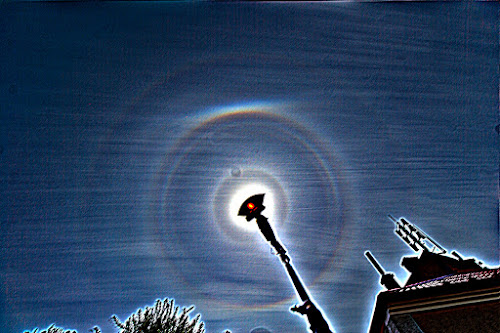Jiří Kaňovský from Černotín, Czech Republic observed three separate halo complexes this August.
August 2nd, 2020 – bright odd radius halos
I (Jiří Kaňovský) was visiting my aunt when I’ve noticed a halo making cirrostratus cloud shield. It was obvious that what I saw were not classical halos, but odd radii ones. I was able to observe 9°, 18°, 20°, 22°, 23°, 24° and 35° halos. Near the end of the observation, a bright 23° parhelion joined the party.
August 10th, 2020 – classic halos with a twist
These halos were observed due to an extensive cirrus/cirrostratus cumulonimbogenitus shield from a previous thunderstorm activity. At the evening hours, some of the cirrus clouds began to sublimate. Among the classic halos like 22° halo, UTA, CZA, SLA and 22° parhelion, later image stacking revealed a bright spot near supposed 9° column arcs and a 24° halo or a 24° column arc as well.
August 24th, 2020 – almost invisible uppercave Parry
There was a surprise 14 days later in the form of a weak but nice halo complex. A 22° halo, parhelions, weak UTA and CZA were observed. Later image processing revealed a weak uppercave Parry and a hint of a supralateral arc.
All these observations are a part of an endeavour to bring an old project back to life – the Czech HOP (Halo Observation Project). After 10 years of inactivity, multiple people are joining again to work on the project so it could be a place for amateurs and “professionals” alike where they can share their photos of observed complexes.







Impressive displays on 2nd and 10th! These are stacks, correct? I wonder what's going on inside the 35° halo in the first two photos ... could the 28° halo be as clear as that one?
ReplyDeleteI remember sending observations in from the USA to the Halo Observe Project and remember sending them to an observer named Patrik Trncak
ReplyDeleteThe 28 looks angular, made of 3 segments. Must be some kind of artefact. Wonder what has made it.
ReplyDelete